In Pictures: AMD Consolidates From 18 Datacenters To Just Two
Inside The Main Office

Back in March, AMD invited Tom's Hardware to visit its new datacenter in Suwanee, Georgia. We were accompanied by Corporate Vice President and CIO Jake Dominguez, Corporate Vice President of Global Infrastructures & Operations Andy Bynum, and Director of Server Software Planning Margaret Lewis. I published my experience at the datacenter in early April. However, I came away with so many other interesting photos to share. Follow along as we tour AMD's new facility, designed to cut costs and improve the company's efficiency.
In this shot, we're in the main office, which provides a building management system for monitoring HVAC capacity, available wattage, and so on. There's also software in place for viewing the status of the generators and switchgears.
Keeping Tabs On Power

Green is good. Everything you see on-screen is running normally. The three indicators up top are 2 MW generators. Additionally, a small life safety generator is rated for 300 kW.
Tape-Based Storage
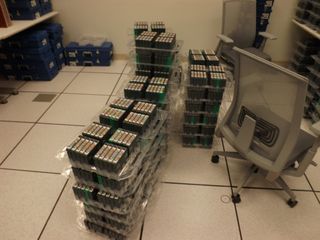
Already, the datacenter's tape-based storage capacity is approaching five petabytes.
Making Sure Everything Is Alright
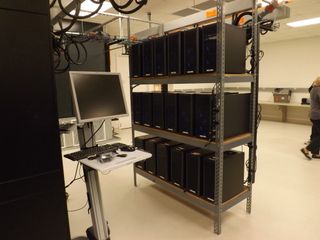
These servers were shipped in from Austin, Texas, and are undergoing testing to make sure they weren't damaged on the trip before going into a data hall.
Server Consolidation Saves Money

AMD performed an IT refresh before moving facilities, reducing the power requirement and needed space of its equipment by up to 50 percent. As an example, the company replaced four racks of four-year-old equipment with one rack of modern gear.
Hey Enthusiasts, Jealous?
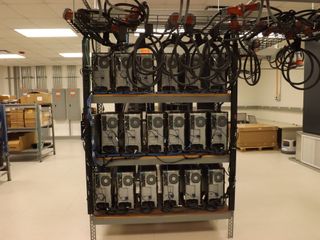
Check out that cable management.
Stay on the Cutting Edge
Join the experts who read Tom's Hardware for the inside track on enthusiast PC tech news — and have for over 25 years. We'll send breaking news and in-depth reviews of CPUs, GPUs, AI, maker hardware and more straight to your inbox.
Room To Grow
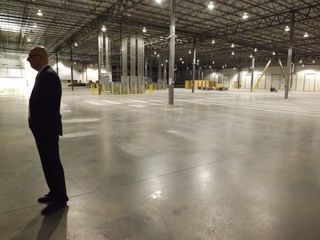
AMD plans to fill all of this space with data halls. Currently, only two data halls are in the building.
Power For Emergencies
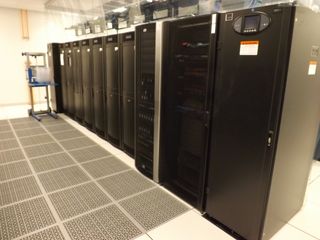
Each data hall has its own backup generator.
If You Can't Stand The Heat...

'
Notice the plastic curtain on the end of each row? That's the keep heat from leaking out. Instead, it's sucked up into the ceiling.
Making The Move
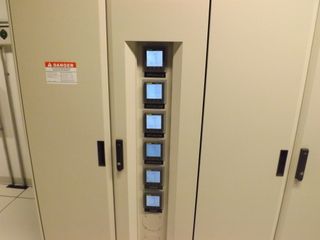
This datacenter is the product of AMD's mission to reduce costs, increase productivity, and improve efficiency. The company introduced its Data Center Consolidation (DCC) plan back in November 2012, which included moving much of its IT infrastructure from Austin, Texas to the Suwanee location.
Putting The Pieces Together
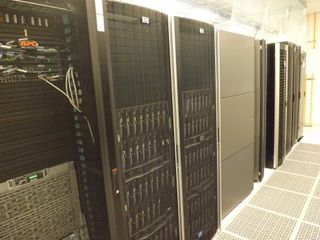
AMD was able to sell the Austin campus and lease the Georgia-based building for a number of years. This arm of the consolidation plan concluded in September 2013, providing $8.5 million in annual savings.
-
houldendub Oh man what I would give to just walk around in there, just to see that cable management as well hrrrnnnffff *nerdgasm*Reply -
warezme If it is so modern, why are they still running Vista on their monitoring workstations?Reply -
eriko Just waiting for an Nvidia fan-boi to jump on the 'green is good' comment....Reply
BTW, I'm not a fan-boi either way, just saying.. -
mavikt I'm a bit surprised about the location they chose; In Sweden I think it was Google that placed a data centers faar up north to tap into the 'clean' electricity from water power, but also benefit from to cooler climate for cooling but then also be able to sell the surplus heat to warm houses.Reply -
wolverine96 Great steps forward for AMD. Sure, I use nVidia for graphics cards (I need them for CUDA rendering), but somebody has to compete with Intel!Reply
They should give everybody in town free hot water that was heated by AMD processors. Sounds like it would be tasty! (After you made it cold, of course!)
I'm excited that AMD is keeping a datacenter in the USA!
(By the way, eriko, green is an AMD color, too!) -
Ragnar-Kon ReplyIf it is so modern, why are they still running Vista on their monitoring workstations?
Obviously the monitoring is a web-based UI. So... why spend the money to upgrade workstations that run a web-based application?
I'd be willing to bet the workstations they actually use for design are some sort of Unix-based operating system running high-end EDA software like Mentor Graphics. That said, maybe AMD uses a custom in-house EDA software solution, so I could be wrong.
Also, holy tape batman.
Most Popular

